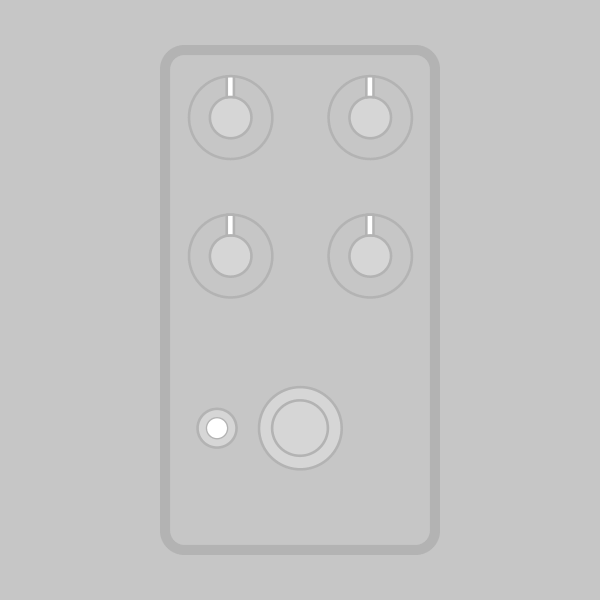
The Argus Silicon Fuzz is based on the fuzz section of the Roland AD-50 Double Beat, a combination fuzz-wah pedal originally released in 1973. The fuzz section is unique and was never released separately from the wah, though the fuzz and wah circuits are independent and fully functional on their own.
The main unique feature of the AD-50 fuzz is the 3-position “wave shape” selector. By filtering the signal in different ways, it can be transformed into a square wave, sine wave, or triangle wave. There is no tone control other than these three fixed modes.
This sounds interesting and unique until you understand a little about how wave shapes correspond to more traditional descriptions of signal characteristics. A square wave is full-frequency with heavy clipping and low dynamics—the classic fuzz tone, and the qualities that distinguish fuzz from overdrive or distortion. A sine wave is rounded and balanced, more like a natural instrument, midrange-focused without too much bass or treble. A triangle wave is piercing, brittle and treble-heavy.
In prototyping the AD-50, we found that the triangle (treble) mode was virtually unusable. (Check out some YouTube demos of the Double Beat if you want to hear it for yourself.) Because of this, the Argus has the option to trade out this mode for a mid-scoop with the center frequency around 1kHz, similar to a Big Muff with its tone control in the center position. It doesn’t have a catchy waveshape description like the other two modes, but it’s a whole lot more useful.
In addition, we’ve added two more controls: an Input level control (similar to turning down the volume knob on the guitar) and a Body control that blends between a small and large input capacitor, which sets the amount of bass going into the clipping stage. Together with the mid-scoop mode, it transforms the AD-50 into a much more versatile fuzz machine.